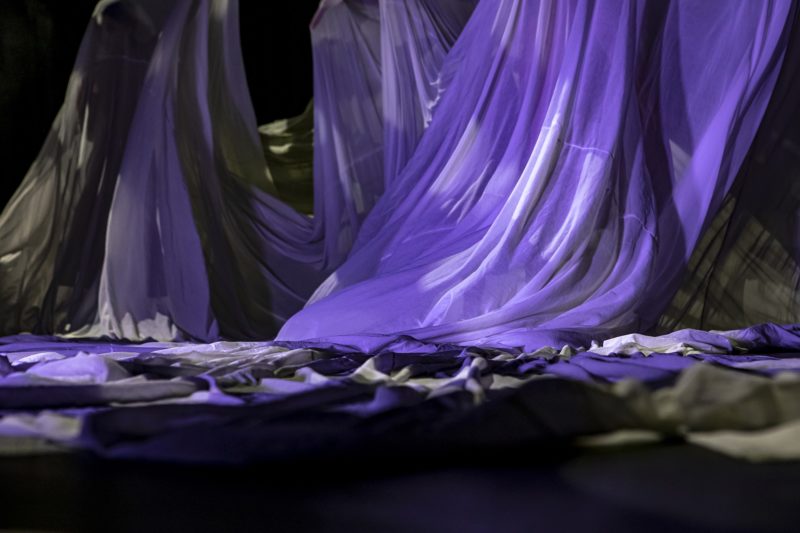Blackout curtains are a great way to enhance the room’s privacy and foster light, noise, and heat blockage from the exterior environment. They certainly make a great addition to any room. Luckily, you can learn how to attach blackout lining to curtains and enjoy the same privacy and light blockage features without wasting a lovely pair of regular draperies.

Simply add a blackout fabric lining at the back part of your regular curtains. You can sew it on the fabric itself or use an iron-on adhesive strip. Luckily, you can find blackout fabric at most craft stores.
Why use blackout curtains?
There are many benefits when installing blackout curtains in your home. You can put them up in any room to improve your home’s privacy. However, these draperies can do more than block out the view from peering eyes.
Because of its fantastic insulation abilities, it can help you reduce energy costs at any time of the year. Closing them during hot summer afternoons can help you block too much heat and keep your home cool and insulated.
They can also protect furniture, floors, and other household items that may be sensitive to UV rays or direct sunlight. It can also help you set the mood for particular activities such as photoshoots and many more.
If there’s a particular curtain design that you are genuinely in love with but want to enjoy the benefits of a lovely blackout drapery, we have just the solution for you. Learn how to attach blackout lining to the curtain through this DIY project.
Step 1: Prepare your materials
For this project, you’re going to need your lovely pair of regular curtains, a blackout fabric lining with the same dimensions, sewing pins, tape measure, handheld iron, scissors, and a strip of iron-on adhesive tape.
Before going fabric shopping, make sure that you know your curtain’s exact dimensions. You don’t want to go to the fabric store and get a blackout curtain that is a few inches too short. You can buy these linings per yard at any fabric or craft shop.
Step 2: Fix your lining
Take your measuring tape and mark the blackout fabric lining to the exact dimensions of your curtain. Make sure that it covers all hems except the top part where the curtain hardware should go.
Cut the excess fabric and set it aside. You can take your curtain and lay it on your workspace with the right side facing down. Get your blackout lining and position it on the backside of the curtain. Make sure you line the top parts of both fabrics so that the blackout fabric stays covered behind the regular curtain.
Step 4: Attach your adhesive
Fold the upper part of your blackout lining but don’t compromise its alignment with the fabric. To make things easier, simply pull the top section so that you can place your iron-on adhesive. Measure the top hem of your curtain and cut a sufficient amount of tape.
Line it on the curtain fabric and place the blackout lining back to its original position. The adhesive should stay concealed between the two pieces of fabric. Make sure that there are no sections of the tape sticking out.
Step 5: Iron the curtain
Secure the blackout curtain by placing pins along the top part of the fabrics to attach them together. Set your iron to wool setting and iron over the backside of the blackout lining. If you are using thicker sets of material, you may need to press and hold for longer durations.
When holding the iron over the blackout curtain lining, the typical duration is up twenty seconds and a maximum of sixty seconds for heavier and thicker fabric types. However, you may need to work in ten-second intervals to avoid burning the fabric.
After heating over the fabric to bond the tape adhesive, leave the curtain to set for some time. Don’t hang it right away, as it might fall apart. Leave it to sit for at least half an hour before hanging your curtains.
Design Tips
For elegant and sophisticated looks, try layering your blackout drapes with a pair of sheer curtains. Leave the blackout curtains open on days when you want to enjoy a bright, airy, and cheerful atmosphere.
At night, you can close your blackout curtains and enjoy 100% privacy. Keep your room dark, calm, and comfortable. You can also darken your room during any occasion to cater to activities like photo shoots and other similar pursuits that require darkened rooms.
Invest in elegant tiebacks and holdbacks to tie your curtains and allow sunlight to illuminate the space. You can choose from a wide variety of curtain ornaments to compliment your draperies. Experiment with different colors and styles.
Decide on whether you want your sheers over blackout curtains or perhaps the other way around. Blackout curtains are versatile and can work around many different designs. Just remember to combine sheer and blackout curtain colors carefully so that they don’t overpower one another.
Summary
Overall, a blackout curtain is simply a window treatment that provides ultimate privacy, light blockage, noise reduction, and enhanced insulation. It is a cost-efficient product that you can conveniently make in your own home.
Whether you want to turn some old curtains into blackout drapes or simply want a DIY project to experiment on, learning how to attach blackout lining to curtains should be a pretty easy venture. You can also sew them on using a sewing machine and thread.
